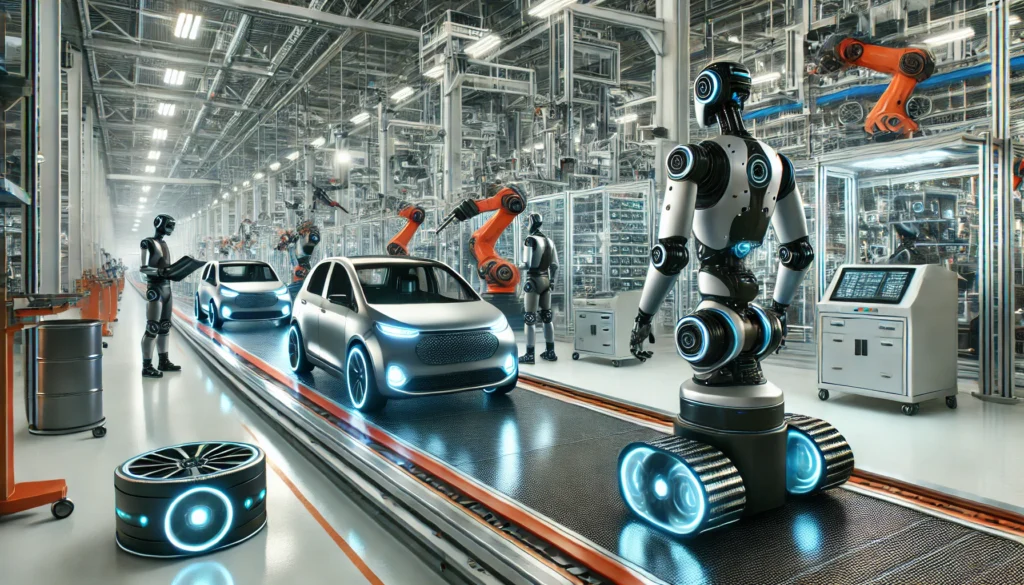The robot used in the automobile industry is reshaping the future of manufacturing, offering unparalleled efficiency, precision, and innovation. As the automotive sector evolves, the integration of advanced robotics has become a cornerstone of modern production lines. These cutting-edge technologies not only streamline processes but also ensure safety, cost-effectiveness, and quality in manufacturing.
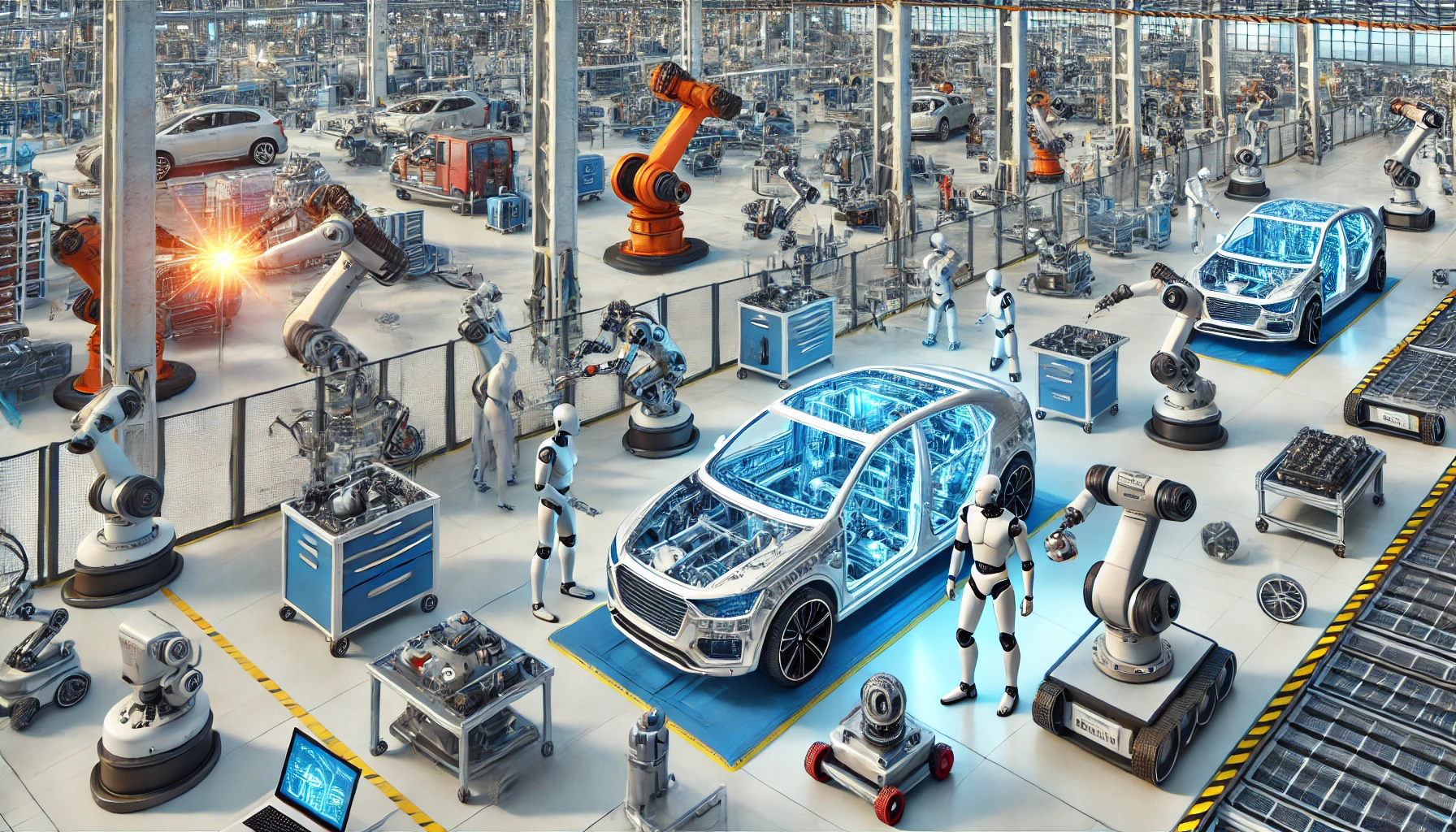
What Are Robots Used in the Automobile Industry?
This section explores the various applications and types of robots that have become integral to the automotive industry, highlighting their diverse roles in streamlining manufacturing processes.
Understanding Different Types of Robots in Car Manufacturing
Robots used in the automobile industry come in various forms, each designed to fulfill specific tasks:
Industrial Robots: These are high-performance machines employed for repetitive and high-precision tasks like welding, painting, and assembling car parts, ensuring consistency and speed.
Collaborative Robots (Cobots): Cobots are designed to work safely alongside human operators, assisting with tasks that require dexterity and precision while enhancing overall productivity.
Autonomous Mobile Robots (AMRs): AMRs are versatile robots that can transport materials independently across factory floors, adapting to dynamic environments without manual intervention.
Key Benefits of Using Robots in the Automobile Industry
The advantages of employing robots in car manufacturing include:
Enhanced Safety: Robots take over hazardous tasks, such as handling heavy machinery or working with toxic substances, thus reducing workplace injuries.
Unmatched Precision: Automation ensures a consistent level of quality, minimizing defects in production.
Cost-Effectiveness: By optimizing operations and reducing waste, robots contribute to significant cost savings in the long run.
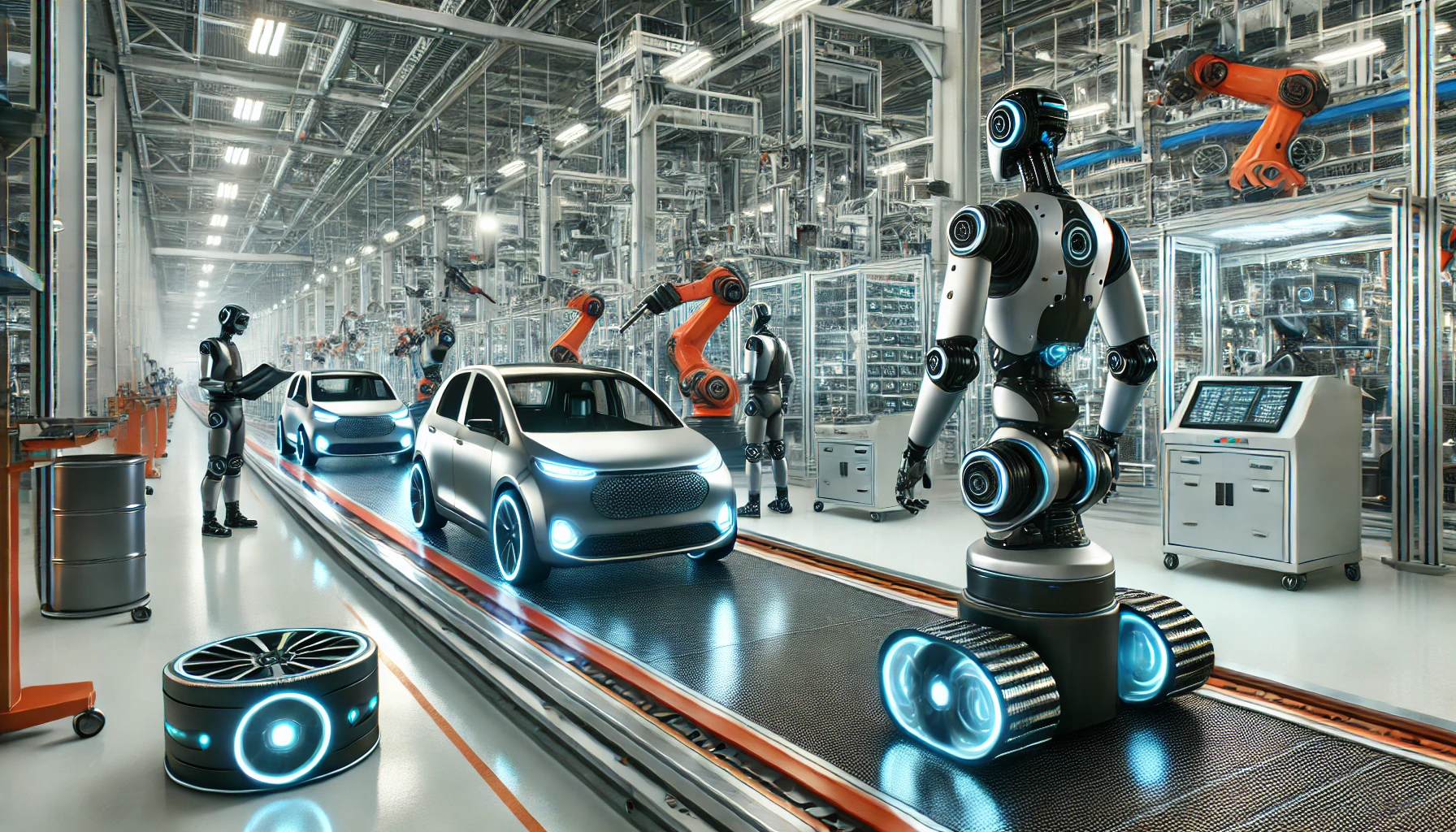
The Role of Autonomous Mobile Robots in Automotive Manufacturing
Autonomous Mobile Robots (AMRs) play a transformative role in modern automotive manufacturing, enhancing efficiency and flexibility in production lines.
Introduction to Autonomous Mobile Robots (AMRs)
AMRs are a cutting-edge advancement in robotics technology. Equipped with state-of-the-art navigation and AI systems, they excel in performing tasks that require high mobility and adaptability, setting them apart from traditional industrial robots.
AMRs in Automotive Assembly Lines
In automobile factories, AMRs are pivotal in tasks such as:
Material Handling: Efficiently transporting raw materials and components to assembly lines without human intervention.
Assembly Support: Aiding in the precise assembly of complex car parts, ensuring streamlined operations.
Logistics: Managing the movement of finished products to storage or shipping areas, thereby reducing logistical bottlenecks.
Real-World Examples of AMRs in Action
Leading automotive companies like BMW and Tesla have successfully implemented AMRs to optimize production. For instance, Tesla’s Gigafactory utilizes AMRs for real-time material transport, significantly reducing production delays.
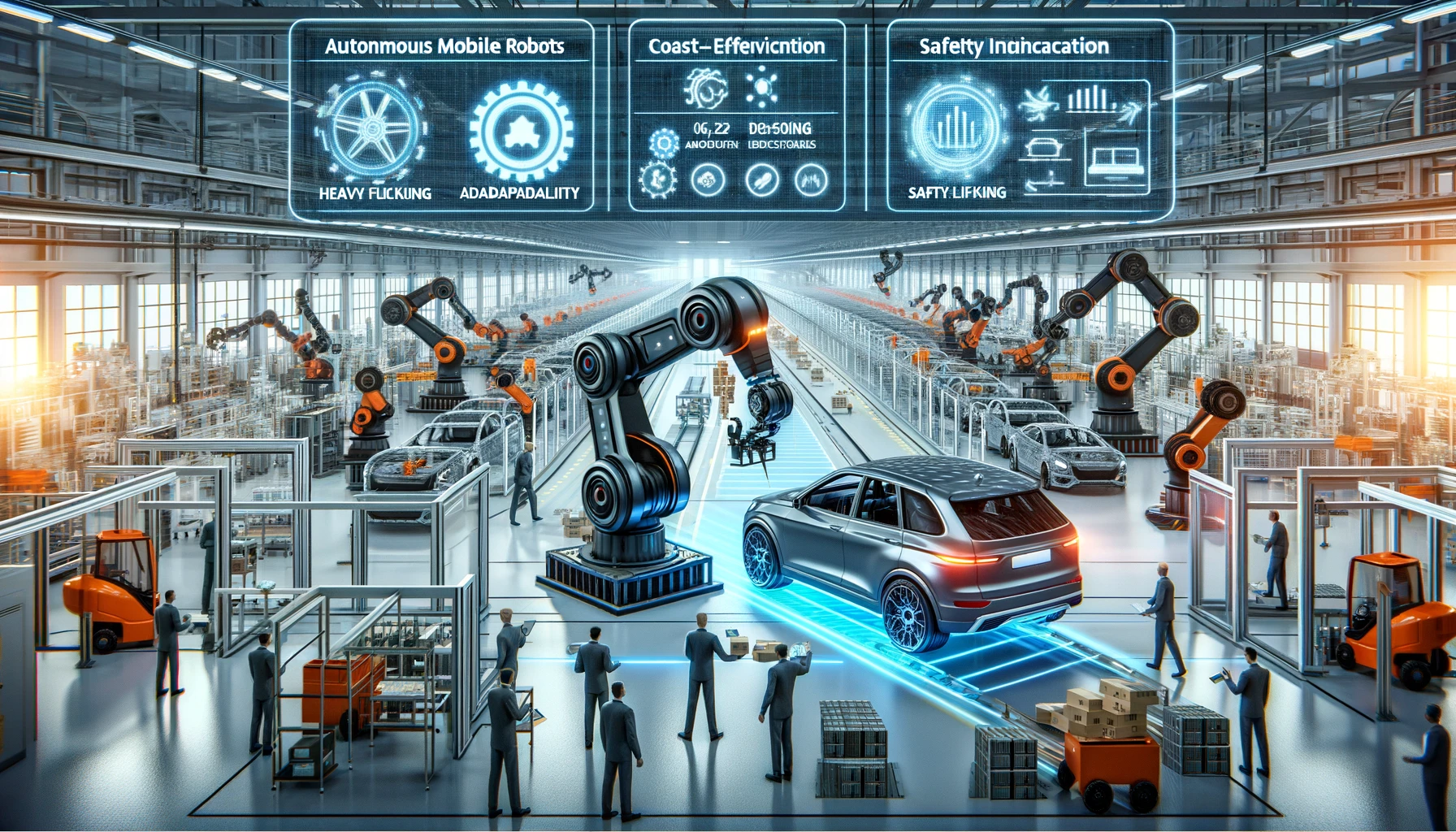
Advantages of Autonomous Mobile Robots (AMRs) in Automobile Manufacturing
This section highlights the multifaceted benefits AMRs bring to automotive production, from operational efficiency to enhanced safety.
Improving Production Speed and Efficiency
- AMRs contribute to faster production by:
- Eliminating manual delays in material handling.
- Ensuring uninterrupted workflows through automated scheduling and transport systems.
Enhancing Worker Safety and Reducing Errors
- Robots used in the automobile industry help create a safer workplace by:
- Taking over dangerous tasks such as heavy lifting or exposure to hazardous materials.
- Reducing the likelihood of human errors in critical assembly operations.
Increased Flexibility and Scalability
AMRs are designed to adapt seamlessly to:
Changes in production requirements, such as introducing new vehicle models.
Scaling operations to meet increased demand without significant infrastructure changes.
Operational Cost Savings
- By automating labor-intensive tasks, AMRs help:
- Lower dependency on manual labor.
- Minimize downtime and production inefficiencies, resulting in substantial cost reductions.
How Autonomous Mobile Robots Work in the Automobile Industry
This section delves into the technical aspects of AMRs, explaining how they operate and integrate within automotive manufacturing environments.
The Technology Behind Autonomous Mobile Robots
AMRs are powered by a combination of advanced technologies, including:
Artificial Intelligence (AI): Enables decision-making and real-time adaptability to changing conditions.
Sensors: Provide environmental awareness and obstacle detection for smooth navigation.
GPS Systems: Ensure precise location tracking and path planning within factory settings.
The Navigation and Path Planning of AMRs
AMRs utilize sophisticated algorithms to:
Plan efficient routes for material transport.
Dynamically adjust paths in response to obstacles or changes in the environment, ensuring optimal performance.
Integration of AMRs with Other Robotics and Automation Systems
AMRs enhance overall automation by working in conjunction with other systems, such as:
Welding Robots: Collaborating on frame assembly tasks.
Painting Robots: Ensuring uniform paint application on vehicle exteriors.
Inspection Systems: Identifying defects with high precision and reliability.
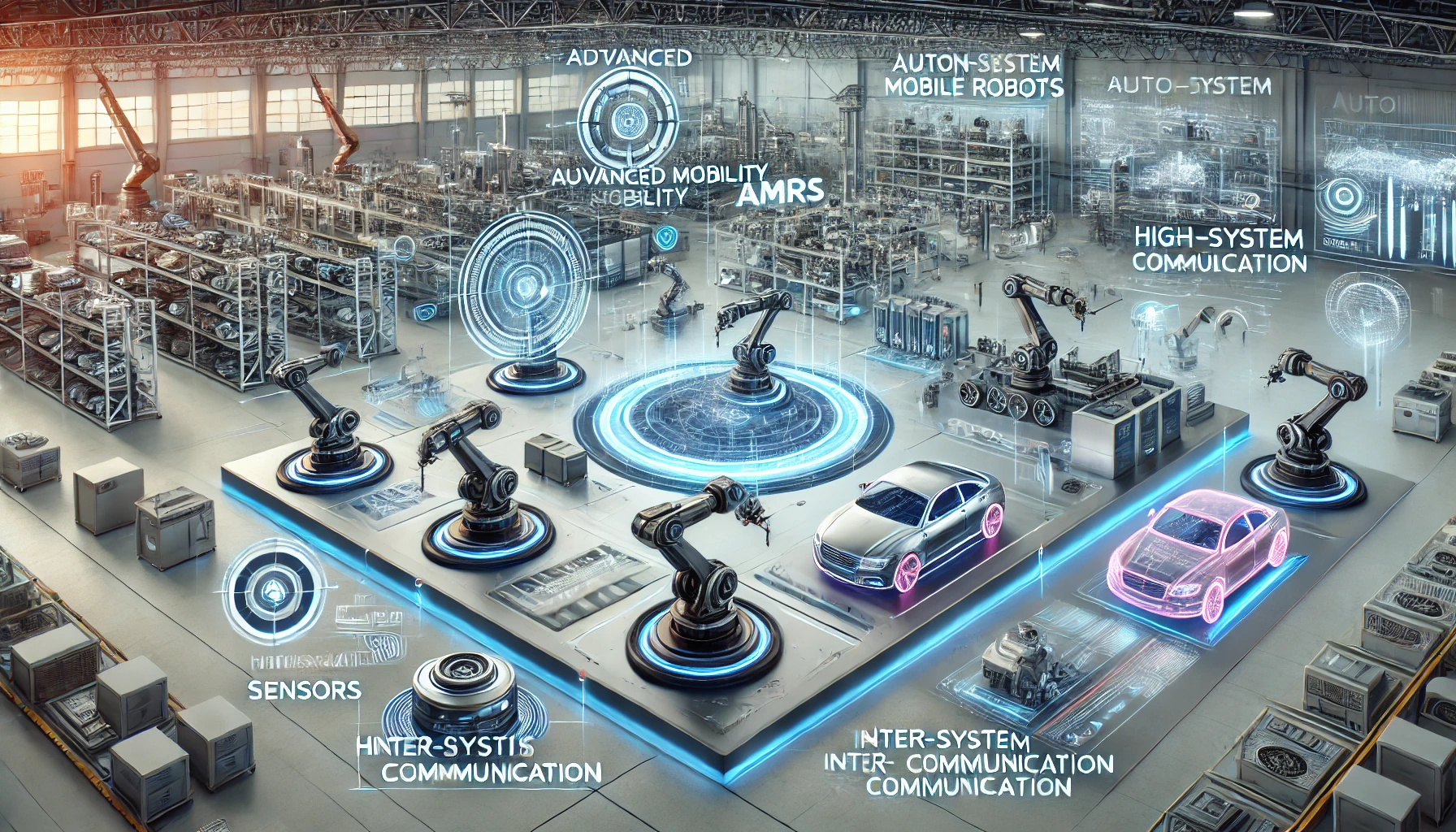
Key Features of Autonomous Mobile Robots (AMRs)
This section focuses on the unique capabilities of AMRs that make them indispensable in automotive manufacturing.
Mobility and Sensors
AMRs are equipped with:
Advanced Mobility: Allowing them to navigate complex factory layouts effortlessly.
High-Precision Sensors: Enabling them to detect and avoid obstacles, ensuring smooth operation in busy environments.
Communication and Adaptability
Key features include:
Inter-System Communication: Facilitating coordination with other robots and factory systems.
Adaptability: Quick adjustments to environmental changes or task requirements without extensive reprogramming.
Benefits of AMRs Over Traditional Automated Systems
Compared to traditional systems, AMRs excel in:
Flexibility: Performing diverse tasks without requiring major modifications.
Cost-Effectiveness: Offering long-term operational savings through efficient resource utilization.
Real-Time Decision-Making: Responding dynamically to production changes or unexpected challenges.
Leading Autonomous Mobile Robots Companies in the Automobile Industry
Major AMR Companies and Their Impact on the Automotive Sector
Autonomous Mobile Robots (AMRs) are becoming the backbone of smart factories in the automobile industry. Key players such as KUKA, ABB, and Fanuc are leading the charge in delivering robotic solutions that improve efficiency and productivity in car manufacturing. These companies specialize in tasks like welding, painting, and assembly—areas where precision is paramount.
Profile of KUKA
KUKA’s robots are renowned for their dexterity and speed. Their AMRs are used to streamline assembly lines, ensuring consistency and reducing human error.
Profile of ABB
ABB focuses on AI-driven robots capable of real-time decision-making, which is critical for high-speed manufacturing.
Profile of Fanuc
Fanuc’s robots excel in endurance, making them ideal for repetitive and labor-intensive tasks in the automobile industry.
Innovations and Technologies by Leading AMR Companies
The adoption of cutting-edge technologies has propelled these companies to the forefront of the automotive sector. For instance:
- AI-Powered Decision-Making: Enables robots to adapt to dynamic production environments.
- Machine Vision: Enhances robots’ ability to detect defects during quality checks.
- Real-Time Tracking: Ensures seamless coordination across manufacturing stages.
Success Stories from Leading AMR Companies in Automobile Manufacturing
Several manufacturers have successfully implemented AMRs to optimize their production processes:
- Tesla: Uses AMRs to automate battery assembly and enhance quality control.
- Toyota: Employs robots for precision welding, ensuring structural integrity.
- BMW: Integrates AMRs for painting, achieving uniform and high-quality finishes.
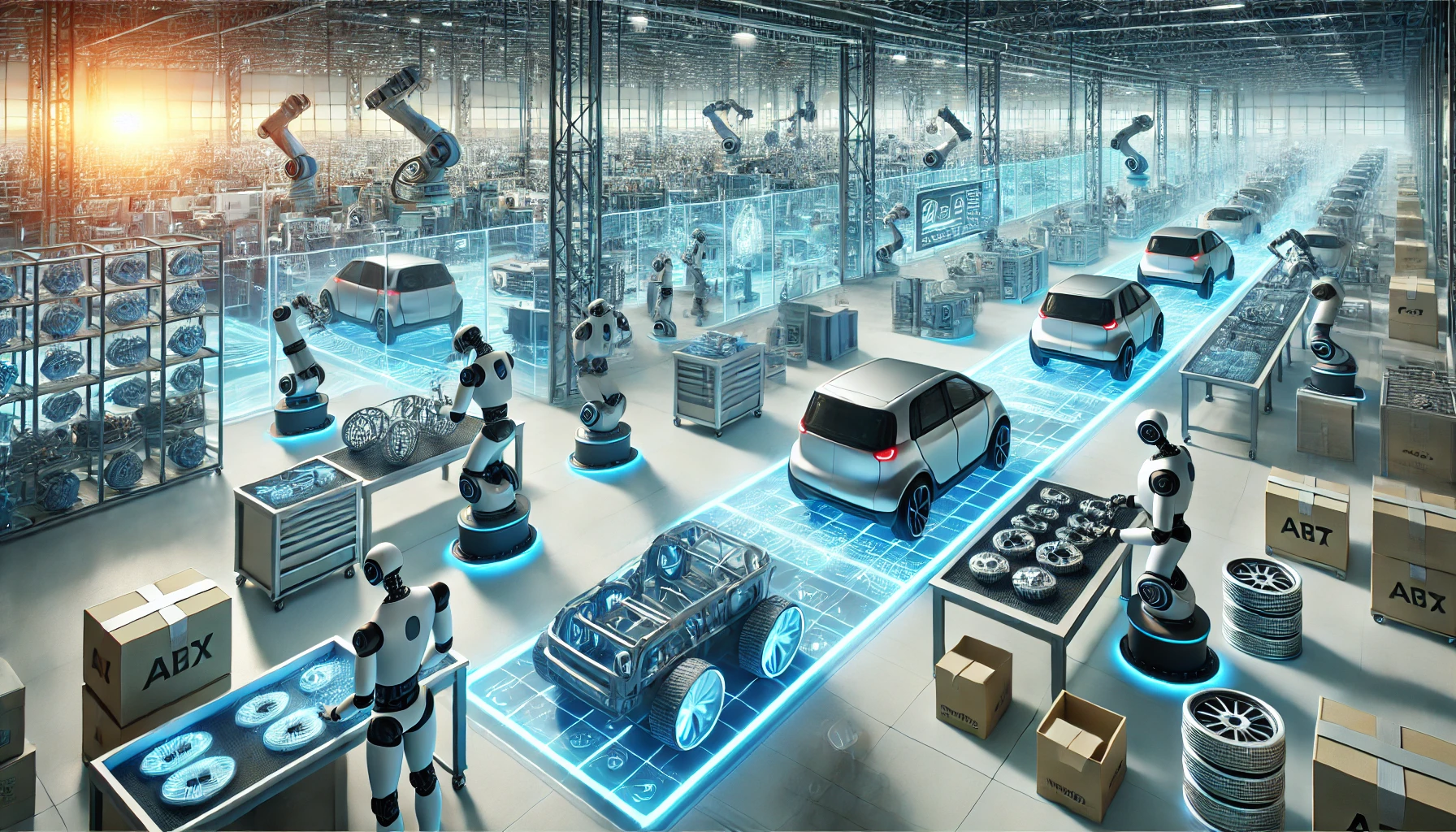
The Future of Autonomous Mobile Robots in the Automobile Industry
Emerging Trends in AMRs for Car Manufacturing
The future of robotics in the automobile industry is marked by continuous innovation. Key trends include:
- Advances in AI and Machine Learning: Robots will become smarter, adapting to new tasks without human intervention.
- Enhanced Connectivity: Internet of Things (IoT) integration will allow real-time data sharing across manufacturing units.
- Sustainability Initiatives: Robots will help minimize waste and energy consumption.
How AMRs Will Drive the Future of Smart Factories
Smart factories are the next frontier in automobile manufacturing, and AMRs play a pivotal role. By leveraging data analytics and machine learning, these robots will:
- Enable flexible production lines.
- Improve inventory management.
- Reduce downtime through predictive maintenance.
The Role of AMRs in Sustainable Automotive Manufacturing
Sustainability is a growing focus for the automobile industry, and AMRs contribute significantly by:
- Reducing material waste.
- Lowering energy consumption.
- Supporting recycling processes.
Challenges and Limitations of Autonomous Mobile Robots in Automobile Manufacturing
High Initial Investment and Maintenance Costs
One of the major hurdles in adopting AMRs is the high upfront cost. Additionally, maintaining these advanced systems requires significant financial resources.
Technological and Integration Challenges
Integrating AMRs with existing infrastructure can be complex. Legacy systems often lack the compatibility needed for seamless operation.
Regulatory and Safety Concerns
Deploying robots in manufacturing environments necessitates compliance with stringent safety standards. Companies must navigate regulatory frameworks to ensure the safe and ethical use of robotics.
The Impact of Autonomous Mobile Robots on the Workforce
Shifting Job Roles and Skills Required
The rise of AMRs has transformed the workforce. Traditional manual roles are being replaced with positions that require technical expertise, such as robot programming and maintenance.
Collaboration Between Humans and Robots
The concept of collaborative robots, or cobots, is gaining traction. These robots work alongside humans, enhancing productivity while ensuring safety. For instance, cobots handle heavy lifting, allowing human workers to focus on more intricate tasks.
Conclusion
The integration of robots used in the automobile industry is not just a trend—it’s a necessity for manufacturers aiming to stay competitive. By adopting AMRs, companies can achieve unparalleled efficiency, safety, and sustainability in their operations. As technology continues to evolve, the automobile industry is set to enter a new era of innovation and growth.
FAQ
1. What roles do robots play in the automobile industry?
Robots in the automobile industry handle tasks like welding, painting, assembly, and material transportation. They ensure efficiency, precision, and safety in manufacturing processes. Advanced robotics such as Autonomous Mobile Robots (AMRs) and collaborative robots (cobots) enhance flexibility, adapt to new production demands, and work alongside humans, making them essential for modern automotive production lines.
2. What are the benefits of using robots in car manufacturing?
Robots improve production quality by ensuring precision and consistency in repetitive tasks. They enhance safety by taking over hazardous operations and reduce operational costs by optimizing resources. Additionally, automation with robots boosts productivity, minimizes defects, and provides scalability for manufacturers to adapt to changing market demands effortlessly.
3. How do Autonomous Mobile Robots (AMRs) contribute to the automobile industry?
AMRs enhance efficiency by autonomously transporting materials, aiding assembly tasks, and optimizing logistics. Equipped with AI and sensors, they adapt to dynamic environments, ensuring seamless navigation and operation. Their flexibility, scalability, and ability to integrate with other systems make them vital for modern smart factories.
4. What challenges do companies face when adopting robotics in the automobile industry?
The adoption of robotics involves high initial investment and ongoing maintenance costs. Integration with existing infrastructure can be complex, particularly for older systems. Additionally, companies must comply with strict safety regulations and invest in training employees to manage and operate these advanced technologies effectively.
5. How do robots impact the workforce in the automobile industry?
Robots are transforming the workforce by replacing manual tasks with automation, requiring workers to develop technical skills like programming and maintenance. Collaborative robots (cobots) enhance productivity by working alongside humans, handling strenuous tasks while allowing workers to focus on more intricate and value-added operations.

